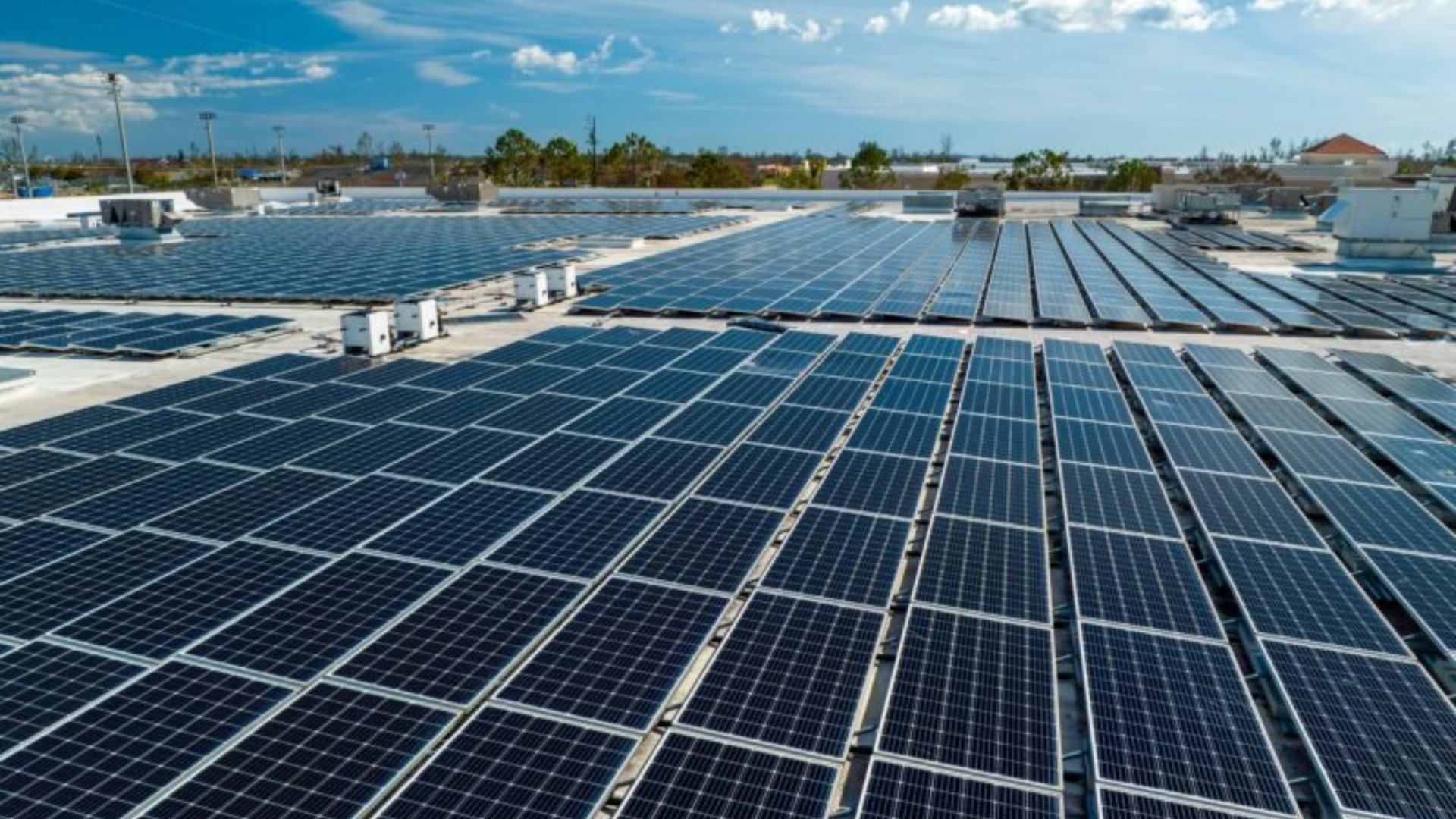Malaysia’s commitment to renewable energy has positioned it as a burgeoning hub for solar energy investments. Supported by government-backed initiatives and a growing market, the regulatory framework in Malaysia is designed to strike a balance between welcoming foreign capital and safeguarding national interests, ensuring a sustainable and progressive energy sector. Malaysia has set an ambitious target of increasing its renewable energy (RE) capacity to 70% by 2050, a significant leap from its current share of less than 20%. This goal aligns with the National Energy Transition Roadmap (NETR), a comprehensive plan aimed at driving the country towards cleaner energy solutions. The NETR underscores Malaysia’s commitment to reducing reliance on fossil fuels while fostering a robust renewable energy sector. As part of this strategy, the government has implemented various programs, policies, and regulations to facilitate investment while maintaining stringent oversight to ensure alignment with national priorities. For foreign investors seeking to capitalize on these opportunities, having the right legal guidance is essential to successfully navigate Malaysia’s regulatory landscape.
Strategic Considerations for Foreign Investors in Malaysia’s Solar Industry
Malaysia provides financial incentives and structured investment programs; foreign equity restrictions and licensing requirements necessitate strategic planning. Investors must ensure compliance with ownership regulations, secure approvals from regulatory bodies, and engage with credible local partners to streamline project execution. Additionally, external factors such as international trade policies and supply chain dynamics can significantly impact project costs and long-term viability for solar energy investment. With our extensive experience in Malaysia’s energy sector, our legal team can assist in structuring compliant investment models and mitigating risks associated with regulatory and external considerations.
The country’s equity ownership restrictions require foreign investors to form strategic partnerships with Malaysian entities, particularly in the LSS PETRA program, where local participation is mandated in most project categories. Choosing the right local partner is critical, as their industry experience, financial stability, and familiarity with government processes can significantly impact project success. In addition to ownership regulations, investors must navigate licensing requirements, environmental approvals, and land-use policies, each of which plays a crucial role in project feasibility and execution. Moreover, securing financing and accessing tax incentives, such as the Green Investment Tax Allowance (GITA) and Green Income Tax Exemption (GITE), requires a clear understanding of eligibility criteria and application procedures. Our firm provides comprehensive legal support to foreign investors, assisting in partner selection, licensing applications, and securing government incentives to optimize investment potential.
Global trade policies, such as the United States’ recent tariffs on Southeast Asian solar panel exports, have shaped Malaysia’s solar manufacturing sector and could influence project costs and supply chain dynamics. Investors must remain vigilant to evolving geopolitical developments and policy changes that may impact their financial models and long-term viability. Furthermore, competition within Malaysia’s solar sector is intensifying, with increasing participation from both local and international players. This makes it imperative for foreign investors to differentiate their offerings, whether through technological innovations, cost efficiencies, or strategic alliances with key industry stakeholders. The government’s continuous efforts to refine policies, introduce investor-friendly incentives, and strengthen public-private collaborations contribute to a dynamic and promising market. Investors who take a strategic approach—aligning their business models with national priorities, forming effective local partnerships, and staying adaptable to policy shifts—can unlock significant opportunities in Malaysia’s rapidly evolving solar energy industry.
Key Steps for Foreign Investors to Enter Malaysia’s Solar Market
(a) Choose the Right Investment Model
Foreign investors looking to enter Malaysia’s solar energy market must carefully select an investment structure that aligns with local regulations. One viable option is forming joint ventures (JVs) with Malaysian firms, which enables compliance with local equity requirements while also benefiting from established market knowledge and networks. Alternatively, investors can establish a Malaysian-incorporated subsidiary with local partners, ensuring a foothold in the market while meeting regulatory obligations. Choosing the appropriate investment model is crucial in navigating foreign equity restrictions, particularly for participation in government-backed programs such as the Large Scale Solar (LSS) initiative and the Corporate Green Power Programme (CGPP).
(b) Obtain Necessary Approvals
Before commencing operations, foreign investors must secure various approvals from Malaysian regulatory authorities. A key requirement is obtaining licenses from the Energy Commission (Suruhanjaya Tenaga, ST), which regulates the generation, distribution, and sale of electricity. Additionally, for projects eligible for incentives, investors may need to register with the Sustainable Energy Development Authority (SEDA) to access benefits such as the Feed-in Tariff (FiT) scheme, where applicable. Beyond energy-sector approvals, investors must also obtain environmental and land-use approvals, ensuring compliance with Malaysia’s environmental protection laws and zoning regulations. These approvals help maintain sustainable development while safeguarding local communities and ecosystems.
(c) Leverage Tax Incentives
Malaysia offers a range of tax incentives to promote investment in renewable energy, notably the Green Investment Tax Allowance (GITA) and the Green Income Tax Exemption (GITE). GITA provides tax deductions for capital expenditures on green technology assets and projects, while GITE grants tax exemptions on income derived from qualifying renewable energy ventures. Additionally, investors can benefit from import duty exemptions on solar equipment, reducing the costs associated with photovoltaic panels, inverters, and related components. Understanding the eligibility criteria and application processes for these incentives is crucial in the early stages of investment planning, as they can significantly impact project feasibility and financial projections.
(d) Comply with Local Regulations
Foreign investors must navigate Malaysia’s regulatory framework to ensure compliance with various licensing, environmental, and equity ownership requirements. The Energy Commission (Suruhanjaya Tenaga, ST) and the Sustainable Energy Development Authority (SEDA) oversee the approval process for solar energy projects, requiring investors to obtain the necessary licenses before commencing operations. Additionally, solar projects must comply with environmental and land-use regulations, including Environmental Impact Assessments (EIA) and zoning laws to ensure sustainable development. Equity ownership restrictions also play a crucial role, as different solar energy programs, such as LSS PETRA and the Corporate Green Power Programme (CGPP), impose specific foreign ownership limits that investors must adhere to. Failure to comply with these regulations can lead to project delays, legal challenges, or even revocation of permits. Therefore, conducting thorough due diligence, working with local legal experts, and proactively engaging with regulatory authorities can help investors navigate the legal landscape more efficiently, ensuring smooth project execution and long-term investment success.
(e) Monitor Market & Trade Policies
The global solar energy landscape is dynamic, and foreign investors must stay updated on Malaysian government policies and international trade developments that may impact their operations. Recent trade restrictions, such as the United States’ imposition of tariffs on Southeast Asian solar panel imports, highlight the importance of monitoring global trade policies to assess potential risks and opportunities. Additionally, changes in foreign ownership policies, energy regulations, and incentives can affect investment decisions. By evaluating market conditions and adjusting investment strategies accordingly, foreign investors can position themselves for long-term success in Malaysia’s evolving solar energy sector.
(f) Establishing Joint Ventures with Malaysian Partners
One of the most effective ways for foreign investors to enter Malaysia’s solar energy sector is by forming joint ventures (JVs) with Malaysian companies. This approach allows investors to meet local ownership requirements while benefiting from the expertise, networks, and regulatory knowledge of established Malaysian firms. Partnering with local entities can also streamline the licensing and approval process, as Malaysian stakeholders have firsthand experience with regulatory requirement and can efficiently navigate the necessary steps to ensure a smoother path to compliance. Additionally, local partnerships enhance credibility with government authorities and increase the likelihood of securing contracts under government-led programs such as the Large-Scale Solar (LSS) initiative and Corporate Green Power Programme (CGPP).
(g) Registering a Malaysian-Incorporated Entity
For foreign investors seeking greater control over their operations while still adhering to regulatory requirements, establishing a locally incorporated subsidiary is a viable option. By registering a Malaysian company with the appropriate equity structure, foreign investors can qualify for various government incentives, tax exemptions, and participation in national solar energy programs. A Malaysian-incorporated entity also provides a more flexible operational framework, allowing investors to bid for renewable energy projects, enter into corporate power purchase agreements (PPAs), and access financing opportunities from local banks and government-backed green funds. This approach ensures long-term sustainability while fostering integration into Malaysia’s energy ecosystem.
(h) Maximizing Tax Incentives and Financial Grants
Beyond securing eligibility for tax incentives, foreign investors should strategically structure their projects to optimize financial benefits over the long term. Programs such as GITA and GITE can be leveraged alongside additional financial support mechanisms, such as soft loans and grants from agencies like the Malaysian Green Technology and Climate Change Corporation (MGTC). These incentives, when properly utilized, can offset initial capital expenditures and improve return on investment (ROI). Investors should also explore tax planning strategies, such as phased capital investments or reinvestment in expansion projects, to extend tax benefits over multiple financial years. Engaging with tax consultants and local financial experts can help ensure that investment structures align with both regulatory requirements and financial optimization strategies.
(i) Adapting to Policy Changes and Global Trade Regulations
The renewable energy landscape is constantly evolving, and foreign investors must remain agile and responsive to changes in foreign ownership policies, incentives, and international trade regulations. Recent geopolitical developments, such as the United States’ imposition of tariffs on Southeast Asian solar panel imports, have significantly impacted Malaysia’s solar manufacturing sector. As a result, industry players must closely monitor trade agreements, tariff adjustments, and supply chain disruptions to mitigate risks and adapt their investment strategies accordingly. Moreover, keeping track of Malaysia’s National Energy Transition Roadmap (NETR) and evolving government incentives ensures that investors remain aligned with national energy goals and emerging market opportunities.
By following these key steps, foreign investors can navigate Malaysia’s regulatory landscape, capitalize on available incentives, and establish a strong presence in the nation’s growing renewable energy market.
Foreign Equity Restrictions
Foreign investors interested in Malaysia’s solar energy sector must navigate a series of legal stipulations that regulate equity ownership and participation in renewable energy projects. While Malaysia has liberalized various industries to allow full foreign ownership, the energy sector remains partially restricted to protect local interests and promote domestic participation. Understanding these restrictions is essential before entering the market, as compliance with regulations is key to securing approvals and licenses, avoiding delays, and ensuring a smooth entry into Malaysia’s renewable energy sector.
(a) Feed-in Tariff (FiT) System
Under Malaysia’s Feed-in Tariff (FiT) system, foreign equity participation is capped at 49%. This system provides guaranteed tariff rates to renewable energy producers for a period of twenty-one (21) years, offering a stable and predictable revenue stream for investors. However, the quota under the FiT program has been fully subscribed, meaning that no new capacity allocations are currently available. The last round of bidding took place in 2023, awarding a total of 36.534 MW for biogas and biomass installations. Despite this limitation, the FiT system remains a notable example of Malaysia’s structured approach to incentivizing renewable energy production while controlling foreign involvement in strategic energy assets.
(b) Large Scale-Solar Photovoltaic Plant (LSS) Programme
The Large Scale Solar Photovoltaic Plant (LSS) Programme has been a key driver of Malaysia’s solar energy expansion. The latest competitive bidding round, LSS5, also known as ‘LSS-Peralihan Tenaga Suria’ or ‘LSS PETRA,’ was launched in April 2024, offering a total capacity of 2,000 MW. This program is divided into four distinct packages, each with specific eligibility criteria designed to promote local participation while still allowing foreign investment to a certain extent:
i) Package 1 – for capacities between 1MV – 10 MV, requiring 100% Bumiputera equity and SME status. This category is exclusively reserved for Bumiputera-owned small and medium enterprises (SMEs). The government’s objective is to strengthen local entrepreneurship and industry capabilities, ensuring that small-scale solar projects remain within the domestic market.
ii) Package 2 – for capacities between 10MV-30MV, requiring at least 51% Bumiputera equity and 100% local Malaysian equity. This package requires at least 51% Bumiputera ownership, with the remaining 49% held by non-Bumiputera Malaysians. The goal is to enhance Bumiputera participation in mid-sized solar ventures while ensuring overall control remains within Malaysia.
iii) Package 3 – for capacities between 30MV-500MV, requiring a minimum of 51% local Malaysian equity. This package allows for foreign participation but mandates that at least 51% of the equity be held by Malaysian entities. This category is designed to attract global investment while ensuring significant local ownership and industry development.
iv) Package 4 – for floating solar projects with capacities between 10MV- 500MV. Unlike other packages, Package 4 does not impose specific Bumiputera or local equity restrictions, making it a more accessible option for foreign investors interested in floating solar projects. However, compliance with licensing and environmental regulations remains essential.
By structuring LSS PETRA in this manner, Malaysia ensures that local entities play a pivotal role in the growth of the solar industry while still enabling foreign investors to contribute their expertise and capital.
(c) Corporate Green Power Programme (CGPP)
Introduced in November 2022, the Corporate Green Power Programme (CGPP) allows Solar Power Producers (SPPs) to develop new solar projects for energy export to the National Grid. This initiative is structured to promote corporate participation in renewable energy while maintaining national control over energy resources. Participation in the CGPP is restricted to local companies with at least 51% Malaysian equity or consortiums where Malaysian partners hold a minimum of 51% equity. The CGPP has been well-received, with its quota now fully allocated. The success of CGPP has prompted discussions on expanding corporate power purchase agreements (PPAs) and enhancing incentives for direct corporate investments in solar energy. Additionally, investors who missed the CGPP allocation may explore opportunities within other government-led initiatives such as the LSS PETRA program or private-sector renewable energy collaborations. Staying informed about policy developments and upcoming tenders will be crucial for investors looking to enter Malaysia’s solar market through alternative routes.
Recent Developments Impacting Foreign Investment
Several external factors have recently influenced Malaysia’s solar energy sector, particularly concerning international trade policies. In November 2024, the United States imposed new tariffs on solar panel imports from Southeast Asian nations, including Malaysia. The Commerce Department’s preliminary decision introduced anti-dumping duties ranging from 21.31% to 271.2% on solar cells from Cambodia, Malaysia, Thailand, and Vietnam. This move was intended to protect American solar manufacturers from what was perceived as unfairly priced imports. As a result of these tariffs, several Chinese-owned solar panel manufacturers, including Jinko Solar Co, Risen Energy Co, and JA Solar Technology Co, have either shut down or scaled back their operations in Malaysia. These companies collectively accounted for nearly 40% of Malaysia’s total solar production capacity, highlighting the significant impact of international trade policies on the local industry.
In December 2024, Malaysia’s Deputy Trade Minister, Liew Chin Tong, urged Chinese companies to refrain from using Malaysia as a base to “rebadge” products to evade U.S. tariffs. This stance reflects Malaysia’s commitment to maintaining fair trade practices and protecting its reputation in the global renewable energy market. However, in response to these challenges, the Malaysian government has begun exploring strategies to mitigate the impact on its solar sector. Additionally, the government is considering domestic support measures, including tax relief and financial incentives, to sustain local solar manufacturers affected by the tariffs. Industry players have also been encouraged to shift focus towards supplying Malaysia’s growing domestic solar market, particularly under programs like the Large-Scale Solar (LSS) initiative and Corporate Green Power Programme (CGPP). These measures aim to cushion the effects of the U.S. tariffs while maintaining Malaysia’s status as a regional solar manufacturing hub. Given these complexities, investors must navigate evolving regulations, trade policies, and market shifts to protect their interests and optimize their investment strategies. Our firm remains at the forefront of legal advisory services, providing tailored guidance to help clients stay ahead of regulatory changes and develop adaptive investment approaches in Malaysia’s solar energy sector.
Conclusion
Malaysia’s solar energy sector presents attractive opportunities for foreign investors, driven by supportive government policies and structured investment programs. Successfully entering this market requires a thorough understanding of regulatory requirements, ownership restrictions, and evolving trade policies. Strategic approaches such as forming joint ventures, leveraging tax incentives, and ensuring regulatory compliance can help investors navigate these challenges while maximizing returns. With our expertise in Malaysia’s renewable energy laws, we provide tailored legal solutions to facilitate market entry, secure necessary approvals, and optimize investment structures. As authorities explore bilateral discussions with key trade partners, particularly within ASEAN and the Middle East, to unlock alternative export markets, and with expectations of future policy initiatives or alternative programs to sustain Malaysia’s renewable energy momentum, proactive adaptation remains key. By aligning with policy shifts and industry advancements, investors guided by our law firm can establish a strong foothold in Malaysia’s growing clean energy sector and achieve long-term success.




